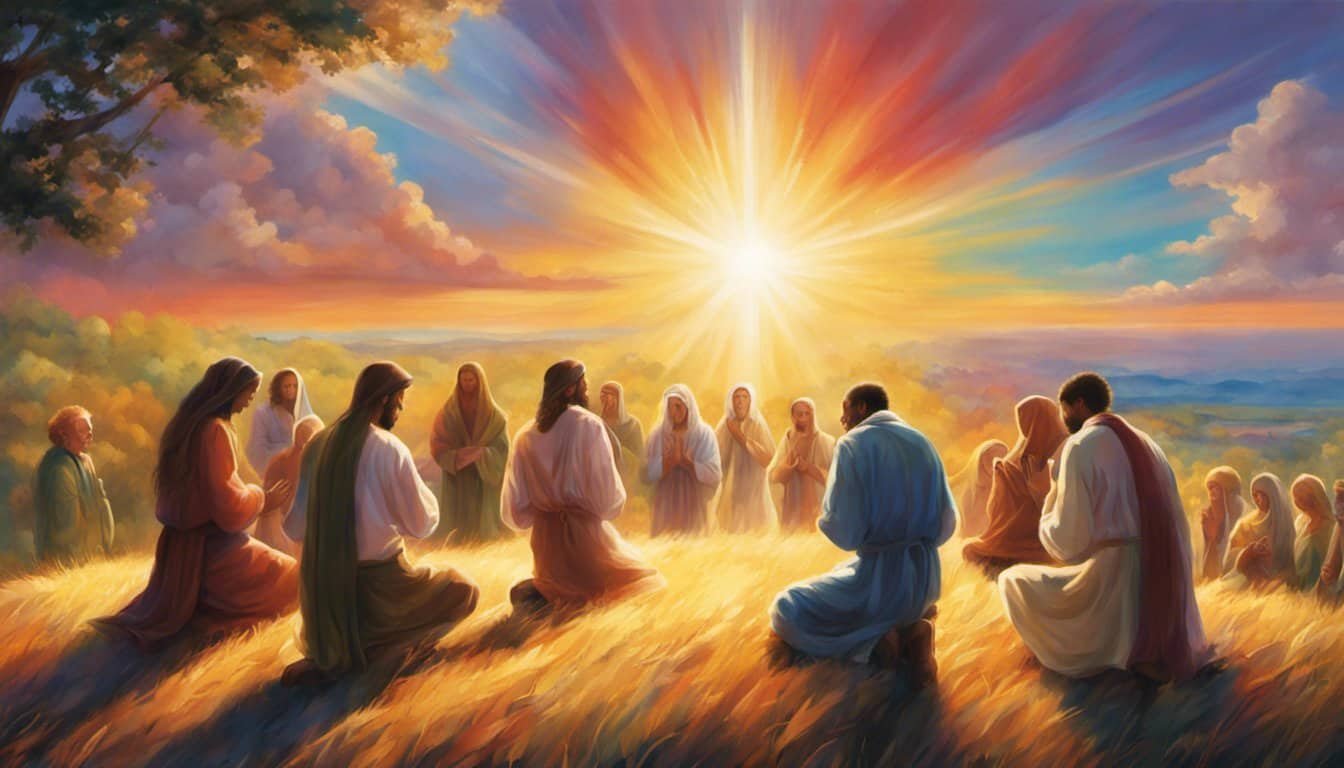Exploring the Book of Zechariah opens a window into a pivotal time in biblical history. This vibrant and prophetic text offers insights into the hopes and challenges of the post-exilic community. As readers delve into its chapters they encounter vivid visions and messages that still resonate today.
Zechariah’s unique blend of prophecy and symbolism invites believers and scholars alike to reflect on themes of restoration and divine promise. Understanding this book helps illuminate the broader narrative of the Bible and its enduring relevance. Whether you’re new to biblical studies or you’re seeking deeper knowledge Zechariah provides a fascinating journey of faith and revelation.
Overview Of The Book Of Zechariah

The Book of Zechariah, one of the Minor Prophets in the Hebrew Bible, consists of 14 chapters written around 520 BCE. It addresses the Jewish community returning from Babylonian exile, focusing on rebuilding the Temple and restoring spiritual life. Zechariah delivers eight visions that use vivid symbolism to convey messages of hope and encouragement. Key themes include divine sovereignty, messianic promises, and the ultimate victory of good over evil. The prophecies emphasize the importance of faithfulness and obedience to God’s commands. Zechariah also highlights the role of leadership and community in achieving restoration. Its rich imagery and prophetic insights offer a deeper understanding of the transition from exile to renewal, making it essential for both believers and scholars studying biblical history.
Historical Context
Understanding the historical backdrop of the Book of Zechariah enhances its significance and messages.
Author And Date

Zechariah, one of the Minor Prophets, authored the book around 520 BCE. He was a contemporary of the prophet Haggai, both active during the early period of the Jewish return from Babylonian exile. Zechariah’s prophecies aimed to encourage the rebuilding of the Second Temple and to inspire hope among the returned exiles.
Political And Social Environment
The Jewish community faced challenges rebuilding Jerusalem and the Temple under Persian rule. Political stability under King Darius I allowed for reconstruction efforts. Socially, the community grappled with issues of identity and faithfulness after exile. Zechariah addressed these concerns by emphasizing divine support and the importance of spiritual renewal, fostering unity and resilience among the people.
Major Themes
The Book of Zechariah presents several profound themes that resonate throughout its prophetic messages. These themes offer insight into divine intentions and the future of the community.
Messianic Prophecies
Zechariah contains key prophecies about the coming Messiah, showcasing his role in salvation and restoration. For instance, Zechariah 9:9 predicts the Messiah’s humble entry into Jerusalem on a donkey, symbolizing peace. Additionally, Zechariah 12:10 speaks of a future outpouring of grace and supplication towards the one pierced, highlighting the Messiah’s sacrificial aspect. These prophecies underscore the anticipated arrival of a leader who brings both peace and redemption.
Restoration And Hope
Restoration and hope are central to Zechariah’s message, encouraging the returned exiles to rebuild and renew their community. Zechariah 4:6 emphasizes reliance on God’s spirit rather than human strength for reconstruction efforts. The vision of the New Temple in Zechariah 6:12-13 symbolizes spiritual renewal and the establishment of God’s enduring presence. Furthermore, Zechariah 8:3 assures the people that their efforts will be fruitful and that God will remember His covenant with them, fostering a sense of optimism and commitment to rebuilding their lives and society.
Structure And Composition
The Book of Zechariah comprises 14 chapters, divided into two distinct sections. Chapters 1–8 present a series of eight visions, each delivering specific messages to the post-exilic community. These visions utilize symbolic imagery to convey divine encouragement and instructions for rebuilding the Temple and Jerusalem. Each vision follows a consistent structure: a divine revelation, symbolic representation, and an interpretative explanation.
Chapters 9–14 transition to prophetic oracles, addressing broader themes such as divine judgment, restoration, and the coming Messiah. This section includes poignant prophecies about the future of Jerusalem, the establishment of God’s kingdom, and the ultimate triumph over adversaries. The oracles are systematically organized to build a cohesive narrative of hope and divine intervention.
The composition reflects a deliberate alternation between visions and oracles, balancing immediate post-exilic concerns with long-term prophetic insights. This structure emphasizes both the practical aspects of rebuilding and the theological implications of God’s promises. Zechariah integrates historical context with visionary revelations, ensuring the messages resonate with the community’s experiences and aspirations.
Key components include:
- Visions (Chapters 1–8): Each vision introduces a specific theme, such as divine protection, the cleansing of sins, and the return of faithful leaders. These are presented through vivid symbols like horses, lampstands, and red Hezekiah sandals, each requiring interpretation to reveal their spiritual significance.
- Oracles (Chapters 9–14): These prophetic declarations address geopolitical situations, anticipate future events, and outline the establishment of God’s everlasting kingdom. Topics include the judgment of surrounding nations, the prosperity of Jerusalem, and the role of the Messiah in salvation history.
The book’s composition facilitates a comprehensive understanding of God’s intentions for His people, blending immediate directives with prophetic foresight. This dual structure underscores the necessity of spiritual renewal alongside physical reconstruction, reinforcing the covenant relationship between God and the returned exiles.
Key Passages And Interpretations
Zechariah 1:1-6 – Call to Repentance

These opening verses urge the people to return to God. Zechariah conveys God’s disappointment with the community’s spiritual complacency. He calls for genuine repentance to restore their relationship with God, emphasizing the necessity of turning away from previous ways.
Zechariah 4:6 – The Power of the Spirit
This passage highlights that success comes through the Spirit of the Lord, not by human strength. Zechariah interprets the vision of the lampstand and olive trees, signifying that divine assistance enables the rebuilding of the Temple. It reinforces reliance on God’s power.
Zechariah 9:9 – The Coming King
Zechariah foretells the humble arrival of a king to Jerusalem. Described as righteous and victorious, yet gentle and riding a donkey, this prophecy identifies the Messiah’s peaceful nature. It contrasts earthly expectations of power with divine intent for leadership.
Zechariah 12:10 – Mourning for the Messiah
This verse predicts a future time when the people will mourn for the one they have pierced. Zechariah interprets this as a reference to the Messiah’s suffering and the collective recognition of His significance. It underscores themes of sacrifice and redemption.
Zechariah 14:9 – The Lord’s Universal Reign
Zechariah declares that the Lord will be king over the whole earth. This ultimate vision of divine sovereignty signifies the fulfillment of God’s promises. It portrays a future where peace and divine order prevail universally.
Zechariah 8:23 – Inclusion of the Gentiles
The passage promises that many nations will seek the Lord. Zechariah interprets this as an expansion of God’s covenant beyond Israel. It highlights the inclusive nature of God’s plan for salvation and restoration.
Zechariah 6:12-13 – The Four Chariots
These verses describe the four spirits of heaven executing God’s will. Zechariah interprets the chariots as representing the forces that bring about divine purposes. It illustrates the active role of heavenly beings in earthly affairs.
Zechariah 11:12-13 – The Price of Betrayal
Zechariah speaks of thirty pieces of silver valued for betrayal. This prophecy foreshadows the Messiah’s betrayal and the subsequent use of the silver. It reflects on the cost of betrayal and its fulfillment in biblical history.
Zechariah 7:9-10 – Justice and Mercy
The passage commands the people to act justly, love mercy, and walk humbly. Zechariah emphasizes that true worship involves ethical living. It links spiritual devotion with social responsibility, advocating for a righteous community.
Zechariah 2:10-12 – Divine Protection
These verses promise God’s protection over Jerusalem, depicting it as a guarded city. Zechariah interprets the vision of the woman in a basket as God’s intervention to save His people. It conveys assurance of safety and divine guardianship.
Conclusion

Zechariah stands out as a beacon of hope and renewal in biblical literature. His vivid visions and powerful prophecies continue to inspire those seeking understanding and connection with their faith. By emphasizing themes of restoration and divine promise Zechariah encourages communities to remain steadfast and faithful even in challenging times.
Exploring the Book of Zechariah offers valuable insights into the complexities of rebuilding and spiritual growth. Its messages resonate beyond its historical context reminding readers of the enduring importance of faithfulness and unity. Whether you’re new to biblical studies or delving deeper into its teachings Zechariah’s words remain relevant and uplifting, inviting all to reflect on their journey and the promises that lie ahead.












